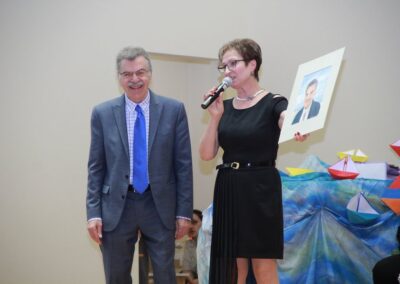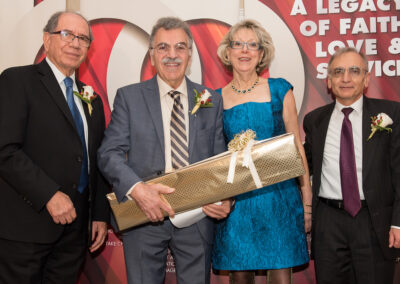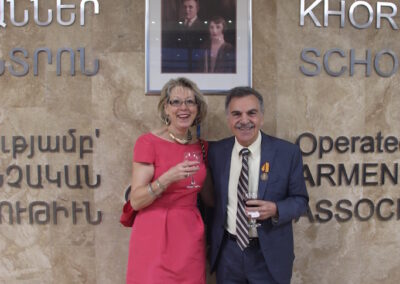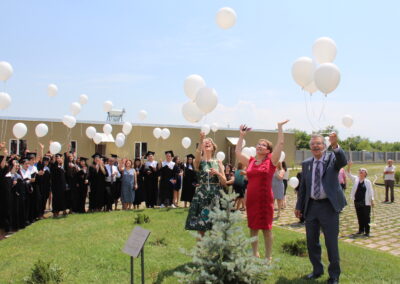
Edward and Pamela Avedisian
Khoren Avedisian, the son of Avetis and Badaskhan Avedisian, was born on March 9, 1894, in Vehri Mezreh village, Kharberd province (Mamuret-ul-Aziz, today Elazig). His father was a local builder in the village. Khoren received elementary education at the Mezreh Central School and migrated to the United States in 1909 where he worked as a weaver in Pawtucket, Rhode Island. On September 30, 1926, Khoren obtained U.S. citizenship.
Shooshanig (Ingilizian) Avedisian, the daughter of Grigor and Anna Ingilizians, was born on August 27, 1904, in Komk village in the Kharberd province. She received elementary education at the German Missionary school in Mezreh (Kharberd). She immigrated to the United States in 1927 and married Khoren on May 11 that same year. Shooshanig obtained U.S. citizenship on September 14, 1931. Like many others at the time, their marriage had been arranged, but it seemed it was ‘agreed in heaven’ as the newlywed couple united in common values and interests. Since the very beginning of their marriage in Pawtucket, Rhode Island, the Avedisians were members and key supporters of the Social Democrat Hunchakian Party, The Armenian General Benevolent Union, as well as committed members at the local Armenian Church.
In Pawtucket, Shooshanig was a teacher working with the Hunchakian Armenian school program. She taught private Armenian lessons in their home. She spent much time helping the local Armenian community members in different ways, including reading and writing letters for the survivors who were searching for their families. In addition, she helped genocide survivors find jobs. Shooshanig wrote poems that were regularly published in the Armenian press. The couple gained much respect as leaders in the Armenian community due to their selfless contribution in their community.
Khoren and Shooshanig were blessed with four children: Paramaz, Zvart, Edward, and Poghos, around whom they established a close-knit and loving Christian family. As this young married couple was growing their family The Great Depression and World War II were in full-force. They faced many hardships, but in fortitude they overcame due to their strong belief in God. Looking back on those days, one of their children would say: “We used to have the things that money couldn’t buy.” Khoren passed away on April 19, 1952, leaving Shooshanig with their four children between the ages of twelve and twenty years.
Shooshanig, a survivor of the Armenian Genocide in the early 1900’s returned to Armenia in 1967. That was her first return visit after her departure back in 1921. Many more visits ensued until her death at the age of 94 on March 12, 1997. One or two of her children or grandchildren, or sometimes other family members, would accompany her on her visits to her Motherland. Shooshanig enthusiastically introduced them to the land of her childhood and visited many of the families she had friendly relations with. She always welcomed the desire of her companions to help people. They would help her transport and distribute bags full of clothing and other necessities that Shooshanig would send to her friends.
Khoren and Shooshanig were Armenia’s children and their souls are now united in this wonderful school named in their honor. They both placed an extremely high value on the role and importance of education and greatly appreciated the opportunity to provide a holistic education to Armenian children. May this building erected in their homeland be an eternal tribute to the precious memory of the devoted Avedisian couple. May we remember Khoren and Shooshanig each time we step through these doors; the couple who overcame much hardship even whilst helping others.





